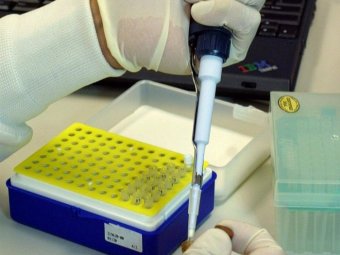The Pentagon has confirmed that 51 labs in 17 US states and three foreign countries, including Australia, were delivered suspected live samples of anthrax from as early as 2006.
It said there is no sign that the sending of the samples of the potentially lethal bacteria, a larger number of samples than previously disclosed, was the result of deliberate action.
It said there were no signs of anyone becoming infected, or any danger to the public.
As the headquarters of the US Department of Defence, the Pentagon has ordered a sweeping review of practices meant to inactivate the bacteria and said the number of labs having received the pathogen may rise as an investigation continues.
On Tuesday, it said that the only confirmed live anthrax samples had been sent to labs from a US Army base in Utah, the Dugway Proving Ground, to 12 US states and three countries as far back as 2006.
It previously disclosed the three foreign countries as Australia, South Korea and Canada.
The Pentagon’s handling of anthrax further raised concerns about the US government’s stewardship of such dangerous pathogens following last year’s disclosure that the US Centres for Disease Control and Prevention similarly mishandled anthrax.
Last week, Senator Nick Xenophon called for the Federal Government to explain how a US military lab was able to send live anthrax to Australia.
“If the Australian Government can put a big effort in terms of quarantine and biosecurity in relation to Johnny Depp’s dogs, you think they would pull out all stops,” he said.
“Something that can be used a a chemical weapon, a weapon of mass terror… there needs to be a full explanation from the Government.”
Foreign Minister Julie Bishop said on the weekend that an investigation was underway.
A statement from the Department of Defence said a sample was sent to the Defence Science and Technology Organisation, which conducts research into chemical and biological warfare agents.
It said the results of tests will be provided to the Australian Government and the United States.
Twenty-two personnel at the Osan Air Base in South Korea, which received a sample, have taken precautionary medical measures, although none have shown sign of exposure.
What is anthrax?
- The normal incubation period for Bacillus anthracis is up to five to seven days
- Infection can occur through a cut in the skin, breathing in anthrax spores or eating tainted meat
- The biggest threat is inhalation anthrax, in which bacterial spores enter the lungs before releasing toxins which cause internal bleeding, swelling and tissue death
- Initially, anthrax symptoms resemble a cold or the flu. In the second stage, anthrax causes fever, severe shortness of breath and shock
- About 90 per cent of people with an advanced stage inhalation anthrax die, even after antibiotic treatment
Source: Reuters
ABC/Reuters

